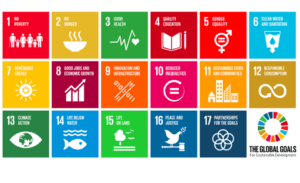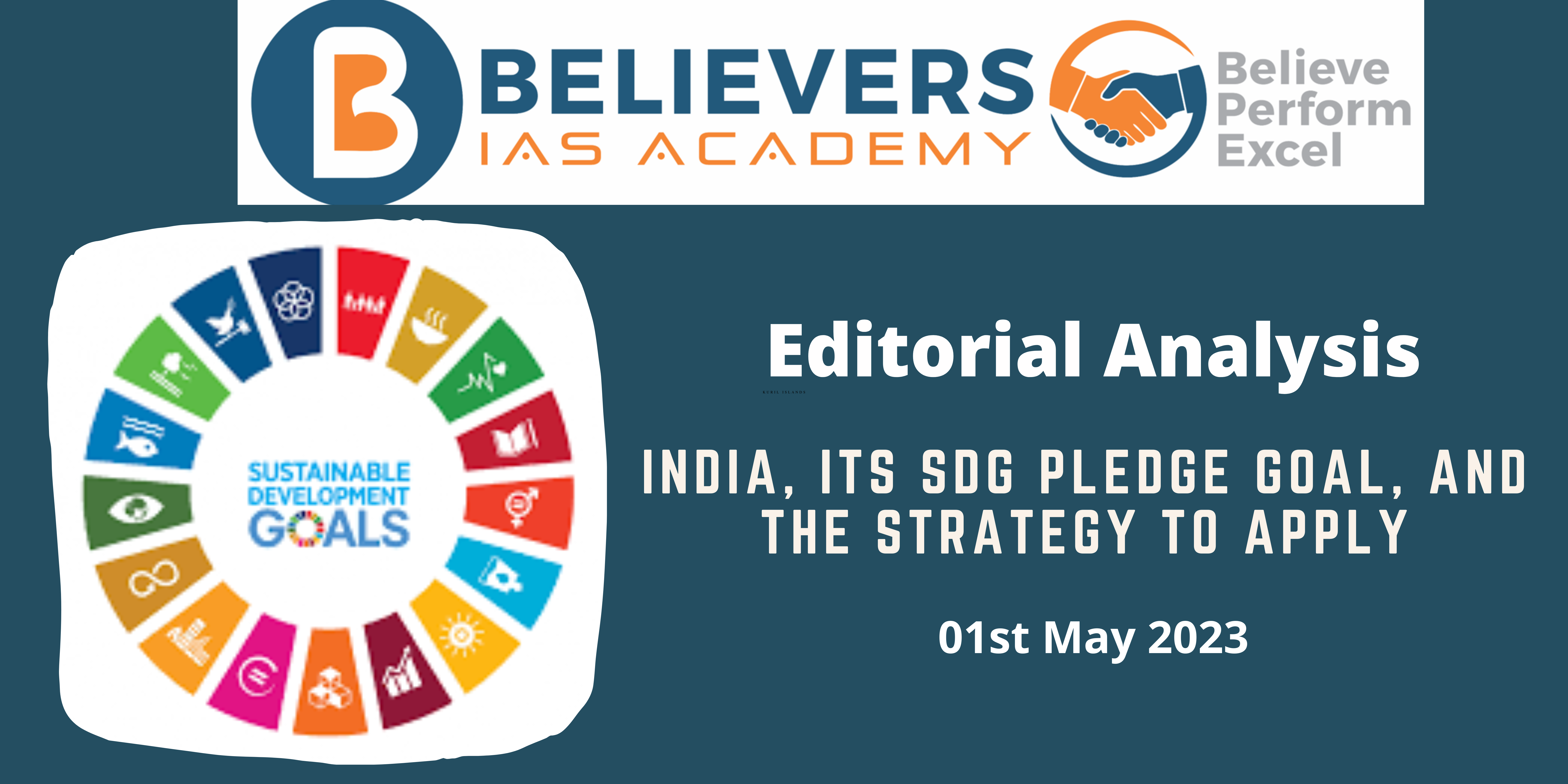India, Its SDG Pledge Goal, And The Strategy To Apply
Context:
While speaking at the first Finance Ministers and Central Bank Governors meeting under India’s G20 Presidency, held on February 24-25, 2023, Prime Minister Narendra Modi expressed concern about “progress on Sustainable Development Goals (SDG) appears to be slowing down.”
Points to Ponder:
- Prime Minister Narendra Modi voiced worry that progress on the Sustainable Development Goals (SDGs) is stalling. India’s success in attaining these goals is important to achieving global SDGs because of its population size.
- A recent study measuring India’s development on 33 welfare indicators covering nine SDGs paints a mixed picture of encouraging and troubling tendencies.
- India is ‘On-Target’ to reach 14 of the 33 SDGs, including indicators for neonatal and under-five mortality, complete vaccination, improved sanitation, and power availability, all of which have significantly improved in the last five years.
- However, the national ‘On-Target’ designation does not apply uniformly across all districts. While neonatal and under-five mortality are currently ‘On-Target’ for the country, 286 and 208 districts (out of 707 districts) are not.
- Concerningly, the present rate of improvement is insufficient to satisfy SDG targets for 19 of the 33 SDG indicators. Despite a nationwide policy drive for clean cooking fuel, more than two-thirds (479) of districts remain ‘Off-Target.’ Similarly, 415 and 278 districts, respectively, are ‘Off-Target’ for enhanced water and handwashing facilities.
- SDG indicators for women’s well-being and gender inequality are of particular significance. No district in India has yet succeeded in abolishing girl-child marriage before the legal age of 18.
- Lessons learned from India’s COVID-19 mobilisation can help to guide and improve India’s approach to meeting its SDG targets. India’s COVID-19 strategy took an “optimisation” approach, relying on political will, responsive management, enough resources, and reliable data.
- The success of India’s COVID-19 vaccination programme and the smooth deployment of a comprehensive relief package was dependent on strong and persistent political leadership supported by a responsive administrative structure at all levels.
- The existing digital infrastructure, as well as new, indigenous initiatives such as the Co-WIN data platform and the Aarogya Setu application, contributed significantly to India’s success with COVID-19. Following in the footsteps of these models, India must establish a coordinated, public data platform for population health management by integrating its various siloed platforms into an integrated digital resource for district administrators, state and national policymakers, and the general public.
- A scaled-up SDG approach must be implemented with the same zeal as India’s COVID-19 relief programme. The Government of India implemented the 1.70 lakh crore Pradhan Mantri Garib Kalyan Yojana, which was eventually increased to roughly 6.29 lakh crore and included the Pradhan Mantri Garib Kalyan Anna Yojana (3.91 lakh crore until December 2022), which covered 800 million people. A combination of spending to provide direct in-kind and economic assistance, as well as measures targeted at revitalising the economy, small enterprises, and agriculture, was central to this relief programme.
Sustainable Development Goals
- The Sustainable Development Goals (SDGs) are a set of 17 interconnected goals intended to serve as a “shared blueprint for peace and prosperity for people and the planet now and in the future.”
- Poverty, hunger, health, education, gender equality, water and sanitation, energy, economic growth, industry and infrastructure, inequality, sustainable cities and communities, responsible consumption and production, climate action, life below water, life on land, peace and justice, and partnerships for the goals are among the issues addressed by the SDGs.
- The SDGs are founded on sustainable development concepts, which recognise that economic, social, and environmental variables are inextricably linked and that progress in one area cannot be sustained without progress in others.
- The United Nations High-Level Political Forum on Sustainable Development (HLPF) is in charge of tracking progress on the SDGs and ensuring that governments, corporations, and civil society organisations are working to accomplish them.
- The HLPF, on the other hand, confronts difficulties due to a lack of political leadership and diverse national objectives.
- The online SDG Tracker was established in June 2018 to display all available data across all indicators to assist in tracking progress on SDG implementation.
- In 2020, the COVID-19 pandemic had a significant negative impact on all 17 SDGs.
- A scientific evaluation of the SDGs’ political impacts concluded in 2022 that the SDGs had only a minimal transformative political influence thus far.
- The SDGs, on the other hand, have influenced how actors perceive and communicate about sustainable development by establishing a common language and framework for action.
- Governments, corporations, and civil society organisations must take action to achieve the SDGs by 2030.




